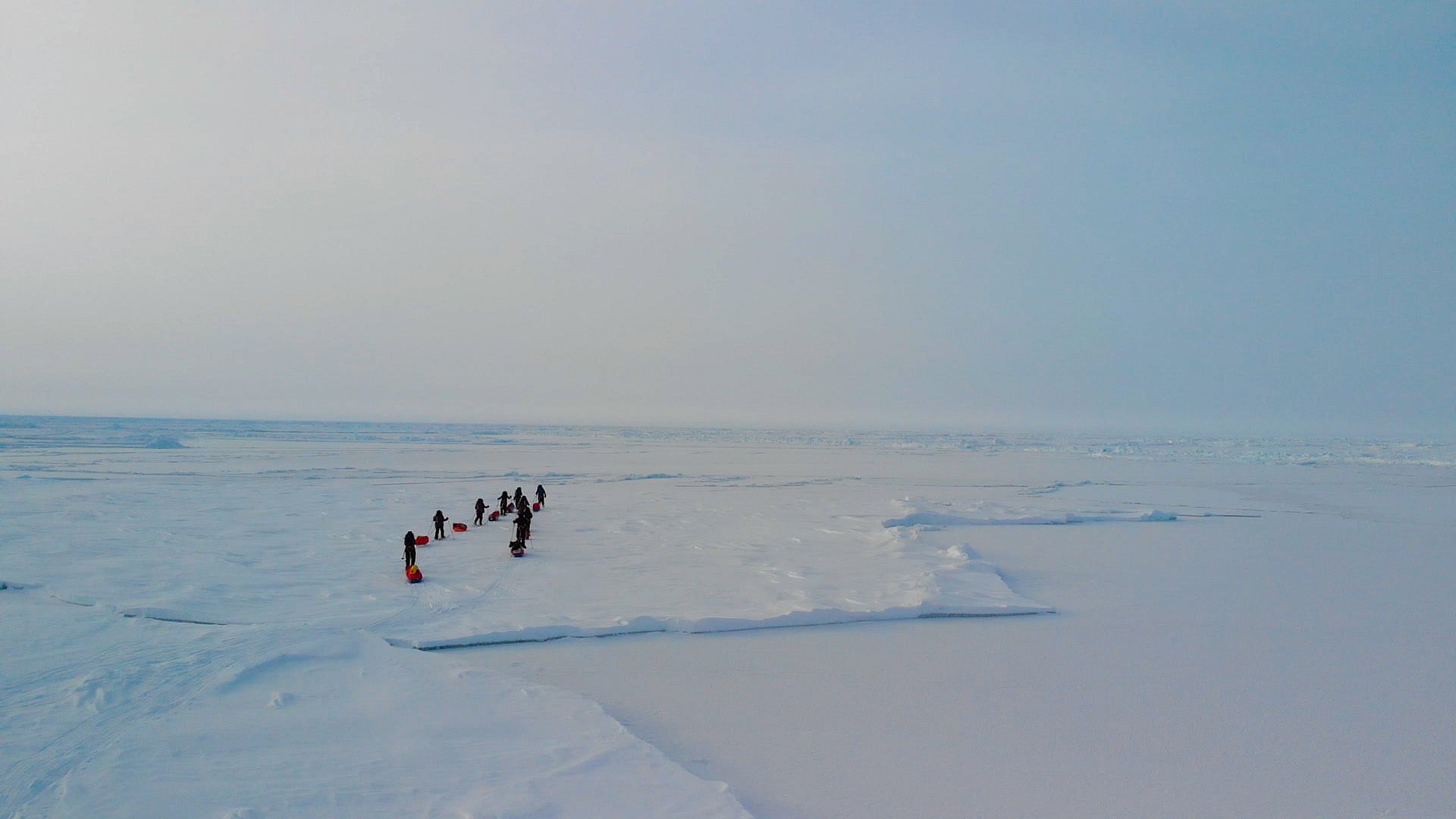EXPOSURE
Directing: B+
Writing: B
Cinematography: A-
Editing: B+
Depending on the premise, the making of a documentary film can be just as interesting as the film itself. In Exposure, a three-person film crew follows an all-woman expedition to the North Pole—this happened in 2018, and due to a mixture of climate change, regional geopolitics, and global health crises, it is to date the last expedition to the North Pole ever to have occurred. And: as I watched eleven women drag their gear on sleds across ice above the Arctic Ocean toward the North Pole, I found myself dying to know more about the people who recorded all of this. Why aren’t these people also characters or subjects in the film?
Evidently director Holly Morris felt it better to focus on the 11 women, a fascinating mixture of backgrounds from across both Europe and the Arab World. This is a natural instinct, I suppose. I would pose that the three film crew members—also all women, incidentally—were by definition part of the group. The film really leans on the difficulty of making it to the North Pole on foot, or on skis. This film crew did exactly the same thing, while also setting up and executing cinematic shots. The way I see it, it’s those three people who did the most impressive thing—and they don’t even get any screen time.
You might not expect Arctic ice to be beautiful, but it is. Exposure is worth watching just for the scenery alone, which includes a lot of drone footage. The expedition launches from an ice base that includes a runway carved out of the snow and ice every year (or at least it was, until 2018), and we see a brief clip of a couple of Russian guys using their own drone to get footage of the landscape, and one of them explains how drones can go haywire due to being so close to magnetic north. It’s easy to infer that the filmmakers faced the same challenge, and at the screening I attended, Morris attested to as much. What limited drone footage they managed to get, they were able to use to maximum effect.
Exposure, which clocks in at a breezy 89 minutes, covers not just the expedition itself, but much of the two years leading up to it. This included winter training in Iceland two years before the expedition, and endurance training in the desert of Oman one year before the expedition. Cold or hot, these women learn to deal with extremes. But, nothing quite prepares them for the actual expedition itself.
Anyone with any sort of survivalist interest would be right at home watching Exposure. Oddly, the all-women cast and crew are somehow both historic and incidental. The purpose of the somewhat pointed mix of Western and Muslim women is never fully clear, but there’s something compelling about them all being women, and makes for rich storytelling. One woman starts off saying she actually does'n’t much like the company of other women. Although the film doesn’t get very deep into it, there is also a scientific study element, as all of the few studies on physiological responses to environments this harsh prior to this had been done on men.
The best part of Exposure is still the women themselves, the limits them push themselves to, and the ways in which they learn to optimize teamwork in high stakes situations. All eleven of the woman who are seen onscreen in the Arctic are dynamic personalities, and when one of them gets frostbite on her fingers, it’s easy to worry about what will become of her, and to be emotionally affected by the tearful goodbyes when she has to be air lifted out before reaching the North Pole.
I found it particularly nice to watch all this from the cozy comfort of a heated movie theater.
The last North Pole expedition to date gets the drone treatment.
Overall: B+

